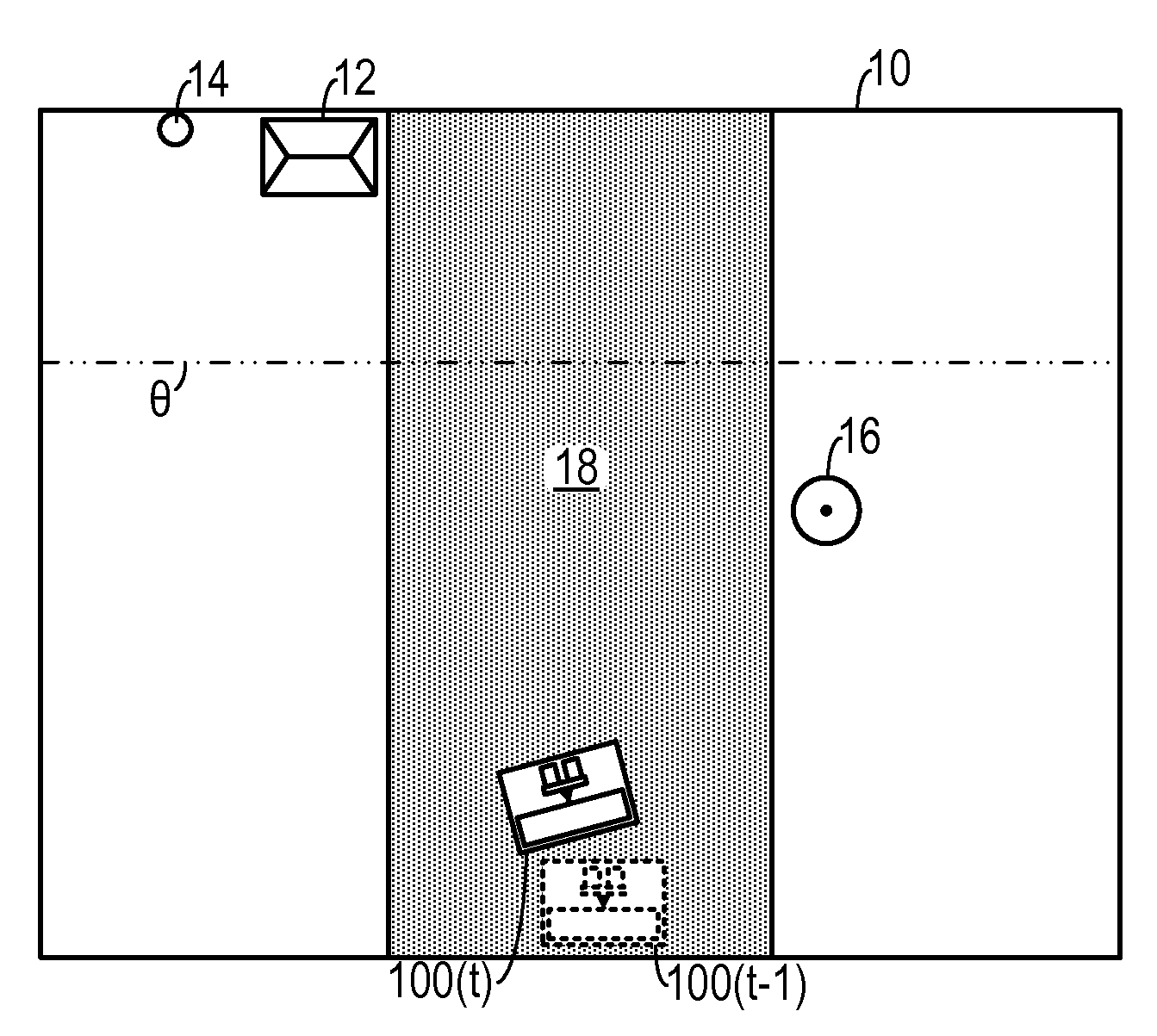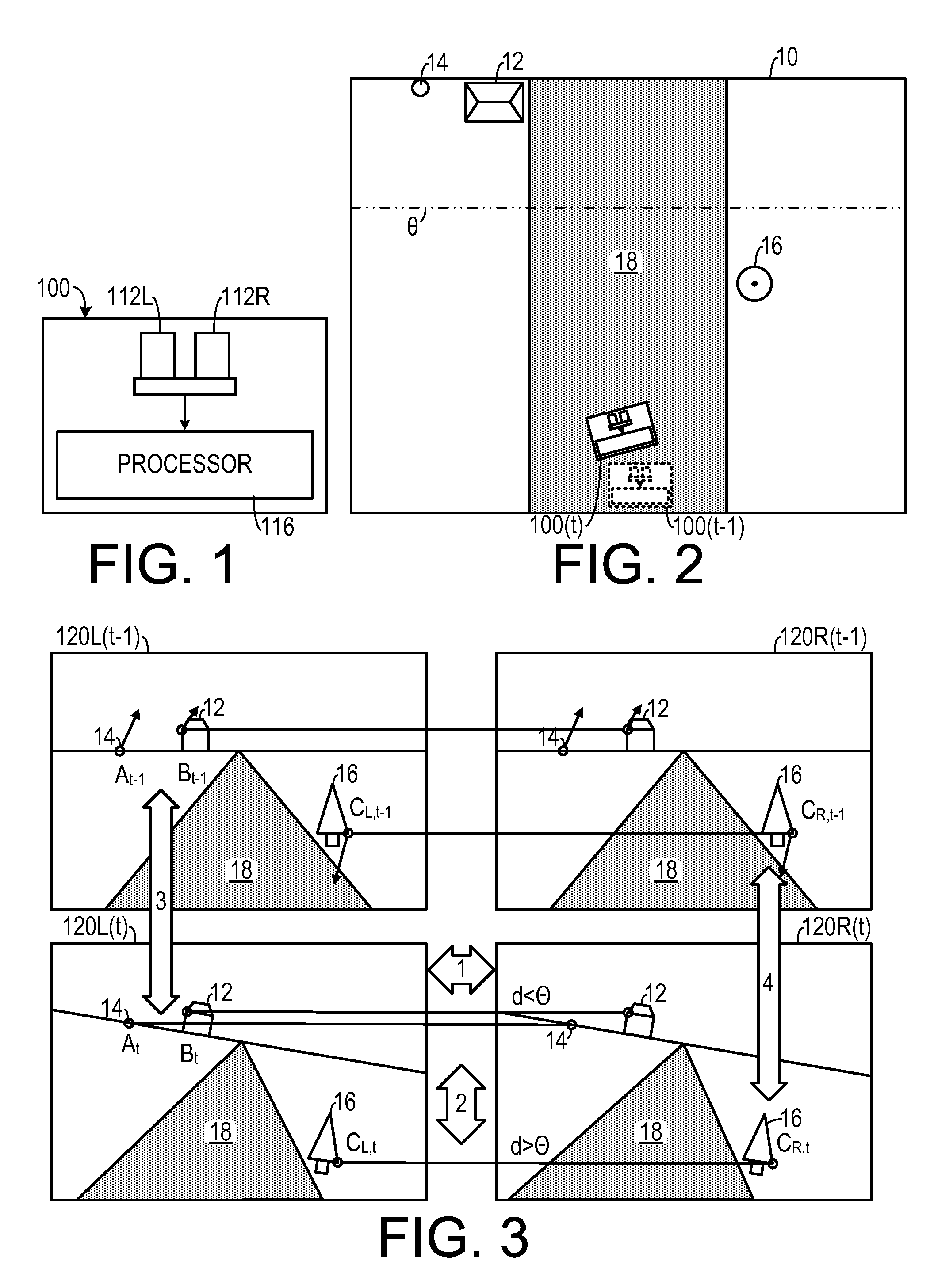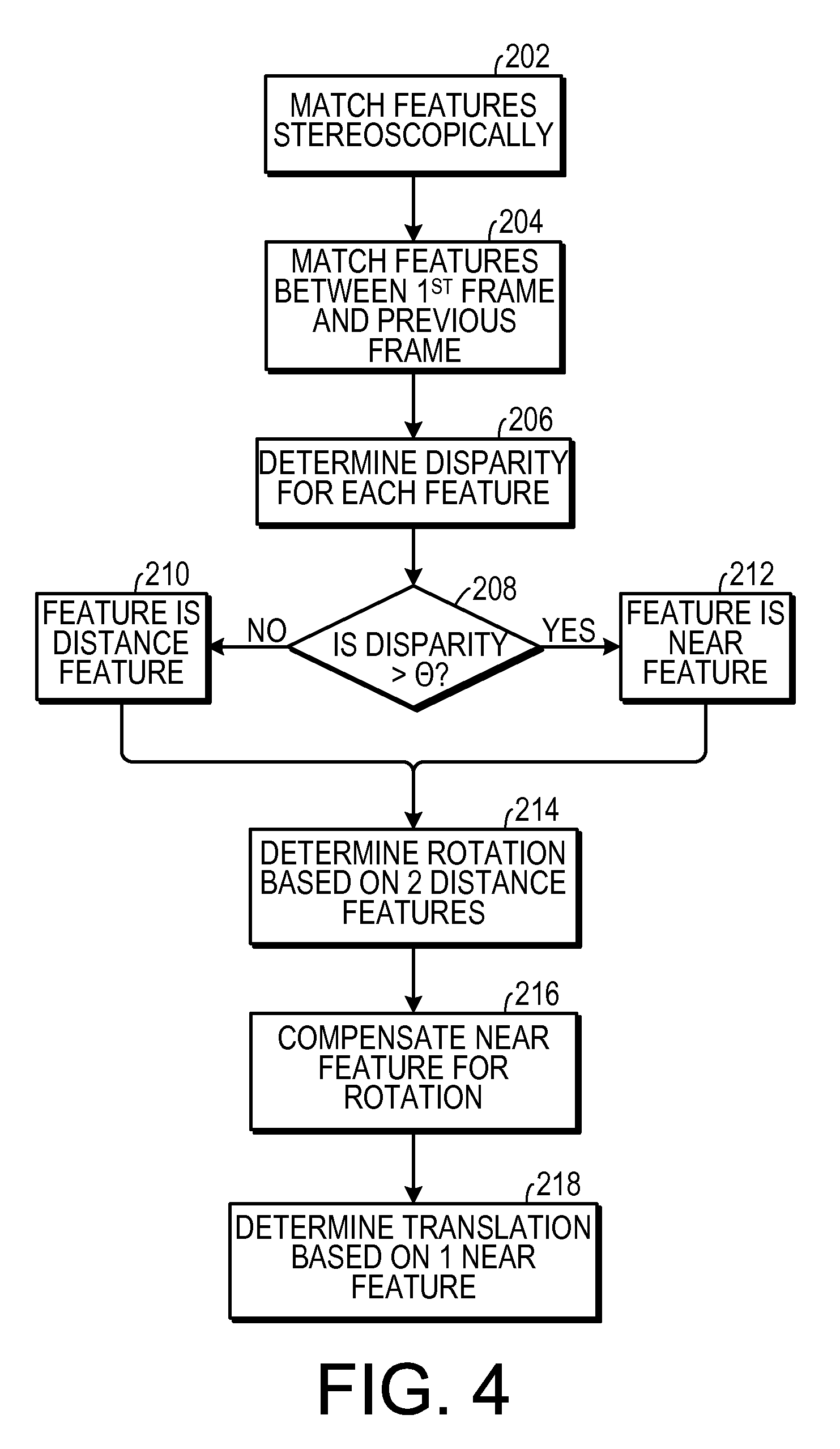Flow Separation for Stereo Visual Odometry
a flow separation and stereo visual odometry technology, applied in image analysis, image enhancement, instruments, etc., can solve problems such as low processing efficiency, high computational requirements, and inability to provide optimal ransac,
- Summary
- Abstract
- Description
- Claims
- Application Information
AI Technical Summary
Benefits of technology
Problems solved by technology
Method used
Image
Examples
Embodiment Construction
[0019]A preferred embodiment of the invention is now described in detail. Referring to the drawings, like numbers indicate like parts throughout the views. Unless otherwise specifically indicated in the disclosure that follows, the drawings are not necessarily drawn to scale. As used in the description herein and throughout the claims, the following terms take the meanings explicitly associated herein, unless the context clearly dictates otherwise: the meaning of “a,”“an,” and “the” includes plural reference, the meaning of “in” includes “in” and “on.”
[0020]As shown in FIG. 1, one embodiment operates on a processor 116 that is associated with a mobile platform 100, such as a robot. The processor 116 is in communication with a left camera 112L and a right camera 112R, that form a stereo camera pair. (It should be noted that other types of stereographic sensors could be employed. Such sensors could include, for example, directional sound sensors, heat sensors and the like.) As shown i...
PUM
 Login to View More
Login to View More Abstract
Description
Claims
Application Information
 Login to View More
Login to View More - R&D
- Intellectual Property
- Life Sciences
- Materials
- Tech Scout
- Unparalleled Data Quality
- Higher Quality Content
- 60% Fewer Hallucinations
Browse by: Latest US Patents, China's latest patents, Technical Efficacy Thesaurus, Application Domain, Technology Topic, Popular Technical Reports.
© 2025 PatSnap. All rights reserved.Legal|Privacy policy|Modern Slavery Act Transparency Statement|Sitemap|About US| Contact US: help@patsnap.com



